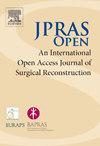IF 1.5
Q3 SURGERY
引用次数: 0
摘要
背景乳腺癌患者切除术后乳房再造的数量差异很大。这项研究旨在评估 2018 年至 2020 年期间的地域和时间变异性及相关因素,包括 COVID-19 大流行的影响。方法这项基于人群的队列研究针对 2018 年至 2020 年期间在加泰罗尼亚公共医疗系统中因浸润性乳腺癌接受乳房切除术的女性进行,随访至 2022 年 11 月。数据来自加泰罗尼亚医院出院登记。结果在纳入的4315名患者中,2173人(50.4%)接受了乳房重建手术(各中心的比例范围为0%至79%);1750人(80.5%)接受了即刻手术,423人(19.5%)接受了延迟手术。与年龄、心脏病、肾病和转移有显著的负相关。显微手术与 R2 健康区域呈正相关(几率比 [OR] 4.67,95% 可信区间 [CrI] 1.73-13.63)。根据手术中心的不同,0%到99%的病例都是立即手术。年龄与此无关;然而,显微手术(OR 7.15,95% 置信区间 [CrI] 1.92-29.34)和属于 R5 卫生区(OR 47.88,95% 置信区间 [CrI] 1.67-99.0)与此有关。与 2018 年相比,重建手术率与 2019 年(OR 0.98,95% CrI 0.81-1.18)和 2020 年(OR 0.94,95% CrI 0.77-1.14)相似,而即刻重建更为常见(2019 年:OR 1.72,95% CrI 1.结论年龄、合并症和显微外科手术有助于解释乳房重建的中心间差异,而其时间似乎仅受显微外科手术的影响。大流行可能加速了立即手术的趋势。本文章由计算机程序翻译,如有差异,请以英文原文为准。
Microsurgery influences breast reconstruction and its timing in patients with breast cancer: A population-based multilevel analysis
Background
The number of post-mastectomy breast reconstructions performed in patients with breast cancer varies widely. This study aimed to assess geographic and temporal variability and associated factors from 2018 to 2020, including the effect of the COVID-19 pandemic.
Methods
This population-based cohort study was conducted in women who underwent mastectomy for invasive breast cancer from 2018 to 2020 in the Catalan public healthcare system, with follow-up until November 2022. Data were drawn from the Catalan hospital discharge registry. Random-effects logistic regression was performed to identify individual, temporal, and center-based variables influencing breast reconstruction and to assess the associations with immediate versus delayed reconstruction.
Results
Among the 4315 included patients, 2173 (50.4%) underwent breast reconstruction (range by center 0% to 79%); 1750 (80.5%) surgeries were immediate and 423 (19.5%) were delayed. Significant, negative associations were older age, heart disease, kidney disease, and metastasis. Microsurgery and the R2 health region showed positive associations (odds ratio [OR] 4.67, 95% credible intervals [CrI] 1.73-13.63). Surgeries were immediate in 0% to 99% of the cases, according to center. Age was unrelated; however, microsurgery (OR 7.15, 95% CrI 1.92-29.34) and belonging to health region R5 (OR 47.88, 95% CrI 1.67-99.0) were related. Compared to 2018, rates of reconstructive surgery were similar to those in 2019 (OR 0.98, 95% CrI 0.81-1.18) and 2020 (OR 0.94, 95% CrI 0.77-1.14), whereas immediate reconstruction was more common (2019: OR 1.72, 95% CrI 1.30-2.27; 2020: OR 4.85, 95% CrI 3.44-6.84).
Conclusions
Age, comorbidities, and microsurgery help explain between-center variability in breast reconstruction, while its timing appeared to be influenced by microsurgery alone. The pandemic may have accelerated the trend toward immediate surgery.
求助全文
通过发布文献求助,成功后即可免费获取论文全文。
去求助
来源期刊

JPRAS Open
Medicine-Surgery
CiteScore
1.60
自引率
0.00%
发文量
89
审稿时长
22 weeks
期刊介绍:
JPRAS Open is an international, open access journal dedicated to publishing case reports, short communications, and full-length articles. JPRAS Open will provide the most current source of information and references in plastic, reconstructive & aesthetic surgery. The Journal is based on the continued need to improve surgical care by providing highlights in general reconstructive surgery; cleft lip, palate and craniofacial surgery; head and neck surgery; skin cancer; breast surgery; hand surgery; lower limb trauma; burns; and aesthetic surgery. The Journal will provide authors with fast publication times.
 求助内容:
求助内容: 应助结果提醒方式:
应助结果提醒方式:


